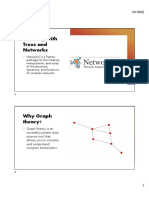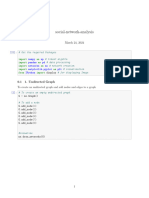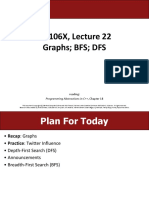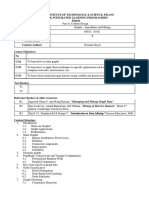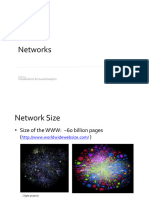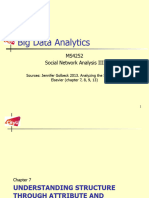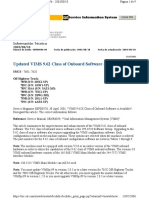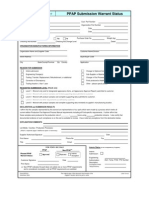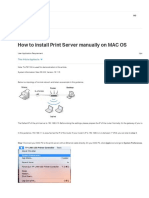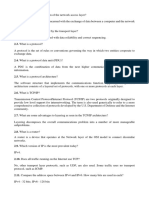SOCIAL MEDIA
ANALYTICS
Section 8
�GEPHI
�FILTERING
Filter take a part of the whole
network to display
From right window Click on tab
Filters
You will find many options you
should explore it.
Cont. on the case study of students
3
�4
�An Example
We will apply some filters on the first datasets we used
Click on it and then we will choose degree range
This one to have some nodes with some degree to display
5
� Drag and drop it down under queries and choose the range then click filter
6
�Another Example Of Hiding edges with weight lower than 333
7
� Another example …
combining 2 filters
One filter is applied AFTER this other:
The first filter to be applied is NESTED (placed inside) the second one as a "subfilter"
Which filter should be placed inside which?
Case when the placement of filters makes no difference
Goal: Keeping on screen only the female characters which have a tie (an edge, a relation) of at
least strength 333.
→ place the filter "edge weight" inside the filter "Gender":
In this case, it was equivalent to:
nest the "Gender" filter inside the "Edge weight" filter Or nest the "Edge weight" filter inside the
"Gender" Filter
→ The result was the same (the network on screen is identical in both cases) 8
�9
�10
� PROJECT
DESCRIPTION
� It is a desktop software for network analysis and visualization.
It is a tool used by data analysts and researchers to explore graphs of different
networks.
It enables users to interact with the graphs in many ways like coloring and
adjusting nodes and edges based on calculated metrics or existing features,
filtering the graphs based on any criteria, applying different community detection
methods, link prediction techniques, and detecting influential users.
12
� Your task is to implement such an interactive system using any programming
language you like (we recommend using Python (NetworkX)).
It is a GUI desktop application, but you can implement it as a web application.
13
� Requirements:
1. Node and Edge Attributes: Allow users to define and visualize custom node
and edge attributes. (User must be able to change size, color, label, and shape).
2. Basic Visualization: Basic network structure visualization.
3. Layout Algorithms: Implement various layout algorithms to visualize network
structures differently. You should handle both: the force-directed algorithms (e.g.,
Fruchterman-Reingold), and the hierarchical layouts (e.g., tree or radial layouts).
4. Graph Metrics and Statistics: Integrate a wide range of graph metrics and
statistics to analyze network properties and characteristics. You should handle all
of the metrics (degree, degree distribution, clustering coefficient, average
clustering coefficient, average path length, etc.).
14
� Requirements:
5. Filtering Options: the filtering capabilities to include:
I. Filtering nodes based on centrality measures (use at least three centrality
measures).
II. Filtering nodes based on their membership in specific communities or their
centrality scores falling within certain ranges.
15
� Requirements:
6. Graph Partitioning and Clustering: Implement at least two different algorithms
for partitioning the graph into clusters or communities based on various criteria.
7. Community Detection Comparison: Compare the results of different community
detection algorithms (e.g., Girvan Newman and Louvain algorithm) side by side.
This comparison should include displaying the following metrics: the number of
communities detected, modularity scores, or other evaluation criteria for each
algorithm.
8. Clustering Evaluation: Apply at least 3 community detection evaluations (internal
and external evaluation)
16
� Requirements:
9. Link Analysis Techniques: Implement various link analysis techniques to analyze
the relationships between nodes in the network. This could include algorithms
such as PageRank, and Betweenness Centrality. These techniques can help
identify important nodes and relationships within the network.
For loading the network, two CSV files will be uploaded nodes file and the
edges file.
You should also handle both directed and undirected graphs.
17
� THERE WILL BE
QUIZ NEXT WEEK
COVERING ALL
SECTIONS
�Thank You


